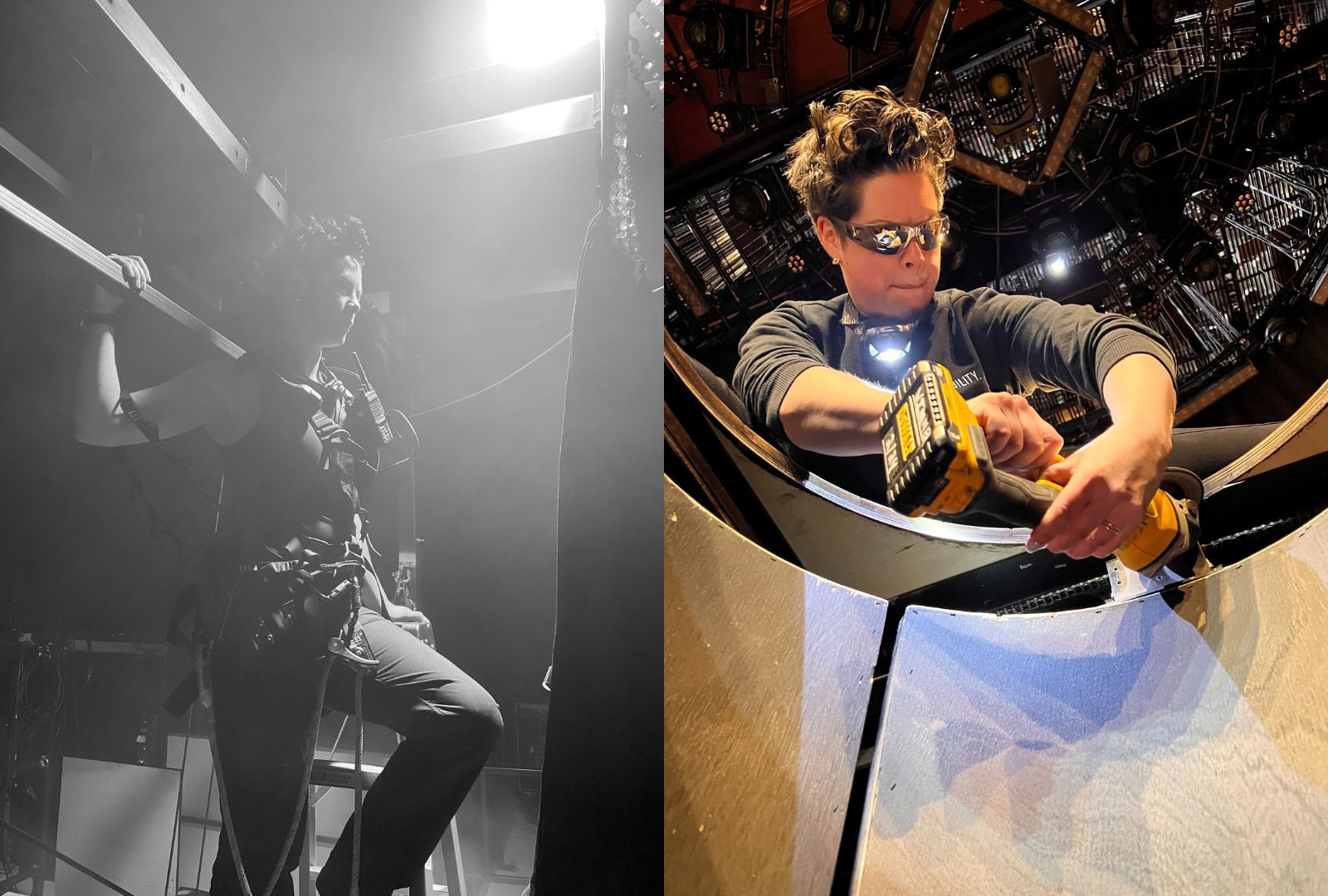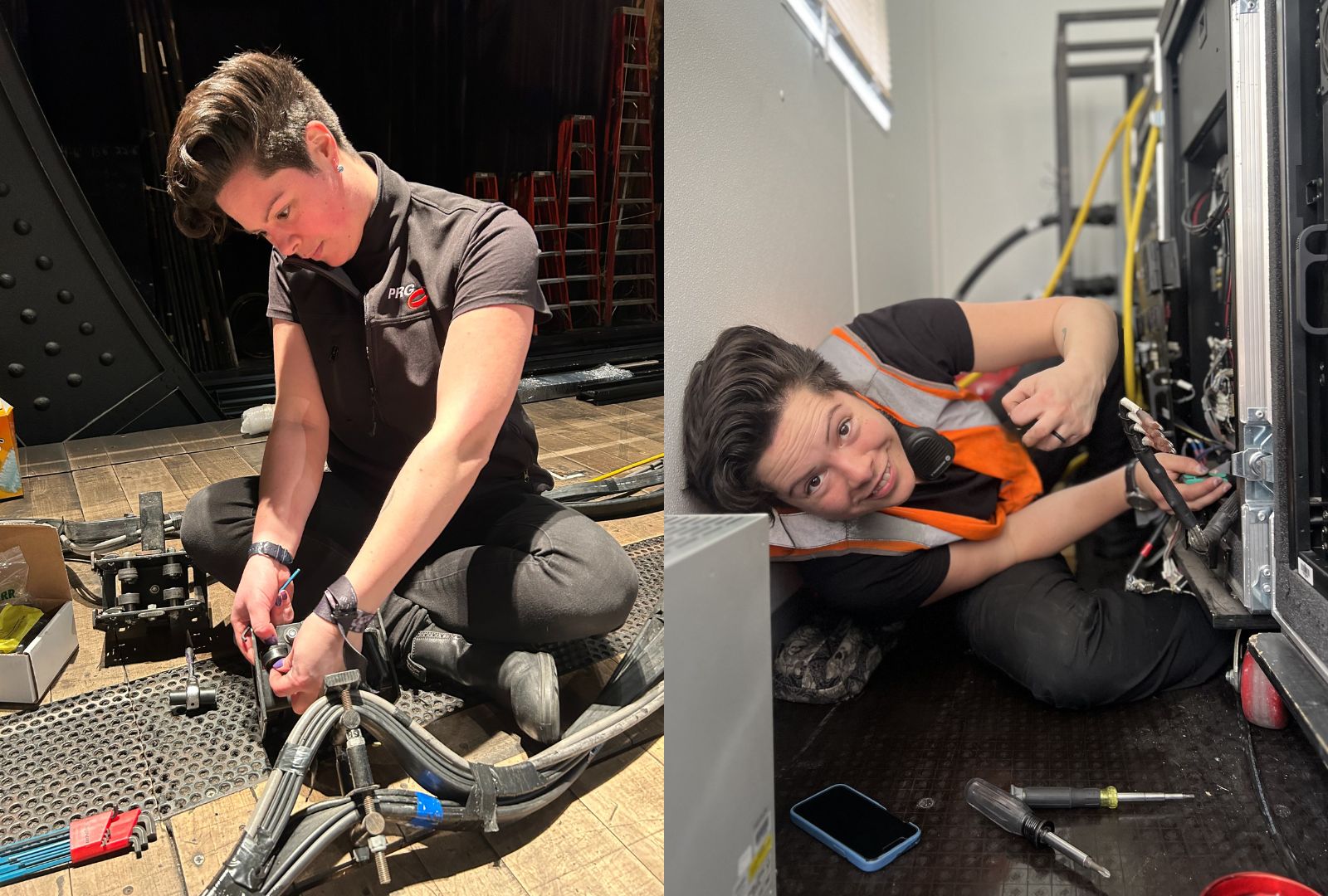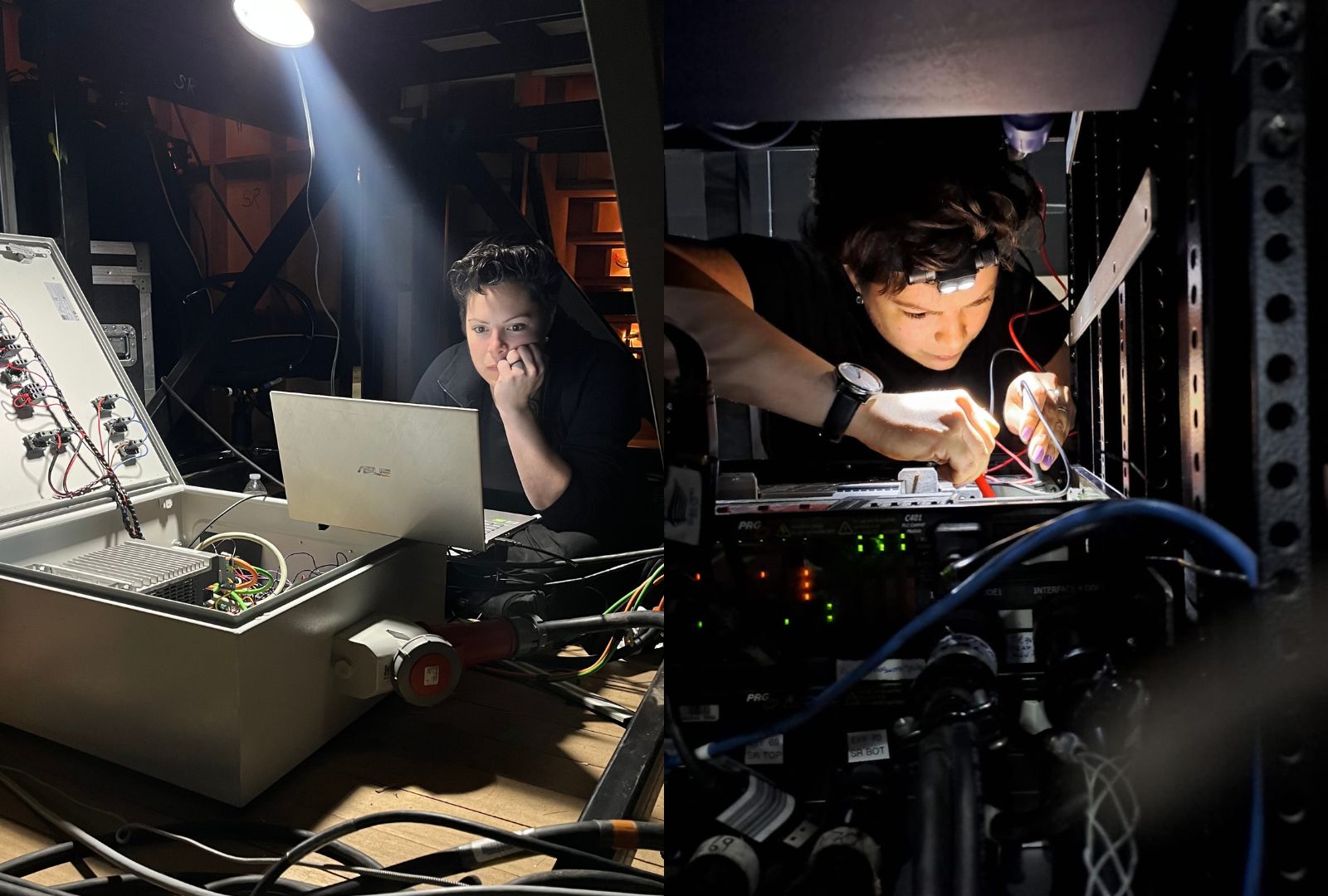Since graduating from NIDA, Isabella Stadler (Production, 2013) has carved out an extraordinary international career. Now based in New York with industry leader Production Resource Group (PRG), Issy specialises in automation engineering, working on some of the world’s biggest live productions including The Picture of Dorian Gray, Hadestown and The Phantom of the Opera. Passionate about encouraging the next generation of technical artists, Issy shares her career highlights, thoughts on the future of live performance technology, as well as advice for graduates eager to work on Broadway.
What initially inspired you to pursue opportunities overseas, and how did that first leap to New York come about?
I think the answer to both these questions is King Kong. I did a secondment on the show while it was in Melbourne and met two of the PRG Automation programmers that were programming the show. I learnt some of the software during my two-week stint and just thought, “this is the coolest thing ever, how do I learn more?”. It became apparent that I wasn’t going to be able to learn the skills I wanted in Australia, and one of the programmers encouraged me to pursue an internship with PRG Scenic Technologies. The rest is history.
It took time to plan but eventually I got my J1 visa and flew to New York. In the end, the internship lasted 10 months and I was eventually hired full-time.

You’ve been working in New York with PRG for nearly a decade, can you tell us about your current role and what a typical day looks like for you in the world of automation engineering and large-scale productions?
My days vary wildly depending on what the priorities are. The job involves new show integration, which means system setup, configuration and commissioning of new automated effects. It’s a process combining computer skills, control theory, coding and mechanical skills to make sure the effect is electrically and mechanically safe. And that it works properly with the piece of scenery it’s moving or with the person flying on it.
We also provide training in the use of the equipment as well as programming of automated effects. This can mean travelling to wherever the show is to demo or train people in the use of the equipment. Or if the show is particularly complex, we program ourselves and do a hand-off once it’s complete.
The job also involves 24/7 support of all our shows with automation equipment, worldwide. All I can say is, it’s never boring!
This range of responsibilities can mean phone calls at 4am or last-minute flights to fix things, it can mean spending days back-to-back in a Broadway theatre commissioning a new effect or sleepless nights devising and troubleshooting to achieve something seemingly impossible.

PRG works on some of the biggest productions globally, are there particular shows or projects you’ve worked on that hold a special place for you, or that really pushed your skills in exciting ways?
I find that every show holds something special, but for an answer that doesn’t take three pages, let’s say The Phantom of the Opera International and Hadestown. Phantom because it’s a big iconic show that I have been lucky enough to open in multiple countries and that show has quite a large automation rig for an international tour. It was a challenge to set up the system in a way that would be uber-efficient and safe for use in different countries with varying power requirements, theatre specifications and crew capacity. It’s been a great show to be a part of, with a great team of people and it’s a joy to see it come to life all over the world.
Hadestown also has a place in my heart because when we built the show in Edmonton, it was the first version in a proscenium space and the first time with automation so it became an incredibly collaborative process to find how we could create the show with the dynamics of a double revolve. It was an environment in which I was able to apply maths and programming skills to achieve the staging and it was a collision of art and physics in the best way possible. It allowed me to creatively contribute as a technician and that is so very rare.
Looking back, are there lessons or experiences from your time at NIDA that still resonate with you or shaped the way you approach problem-solving and leadership in your work today?
NIDA is a safe place where all creative folks can try their hand at their craziest ideas, it gives you a real space to experiment and grow. I’m not an artist in the conventional sense, my creativity applies to machines and in making big heavy stuff defy gravity, I was able to discover that by process of elimination from my opportunities at NIDA.
Looking back, I appreciate the Institute for a well-rounded education. History classes gave me knowledge and context, and our production seasons built skills in collaboration that in turn built a vocabulary with which to reach other artists.

You’ve had a hand building and engineering the automation systems on Broadway, including the one being used for Kip Williams’ (Directing, 2009) production, The Picture of Dorian Gray, can you walk us through the process of developing that system and how it supports the storytelling on stage?
When a show requires automation they create a scope of what elements need to be automated, which includes information about how heavy they are, how fast they need to move and if there are any special effects required.
The Picture of Dorian Gray is a unique example of where the automated effects are as integral as the performers to creating the dynamics of a scene. We had to create the right feeling and movement of each screen to achieve Kip’s particular staging.
To achieve this, we built a system with nine winches combining travel effects with zero-fleet lift winches that were programmed with swing cancelation code to ensure the motion and positioning of each screen was accurate. This enabled the video team to track each screen through the space and seamlessly map the video content.
What excites you most about the future of production and automation in live performance, and are there any innovations or trends you’re especially keen to be part of?
Automation is always getting incrementally bigger and better with more ambitious projects and evolving technology. We are seeing a lot more integration with LX & video with position tracking over a 3D space and it’s important to keep up with those requirements. There in increased utilisation with special effects for shows like Stranger Things. I think we’re heading towards integrated object motion to create bigger spectacles and immersive experiences.
I also hope to be a part of teaching the next generation of technicians/programmers/ nerds who might enjoy this as much as I do!
What advice would you give to NIDA students considering a placement or ongoing career overseas, especially in production and automation?
Think big. Ask questions. Be tenacious. And find mentors wherever you are.
If you have an idea or a dream about something, chase it. Do the work, build your skills and find the thing that fits you. For overseas dreamers, do your visa homework and do your tax homework – International adulting is hard but rewarding! For production and automation specifically, learn electrical theory and mechanics, learn control theory and some programming then find a place where you can get your hands on a system and practice.
There are creative forces at work all over the world. Go exploring.
*The Bachelor of Dramatic Art (Production) course is now the Bachelor of Fine Arts (Technical Theatre And Stage Management).
**Header image: Issy Stadler and Sean Sweeney at The Phantom of the Opera opening in Manila, 2019. Photo by Jonathon Stott.
